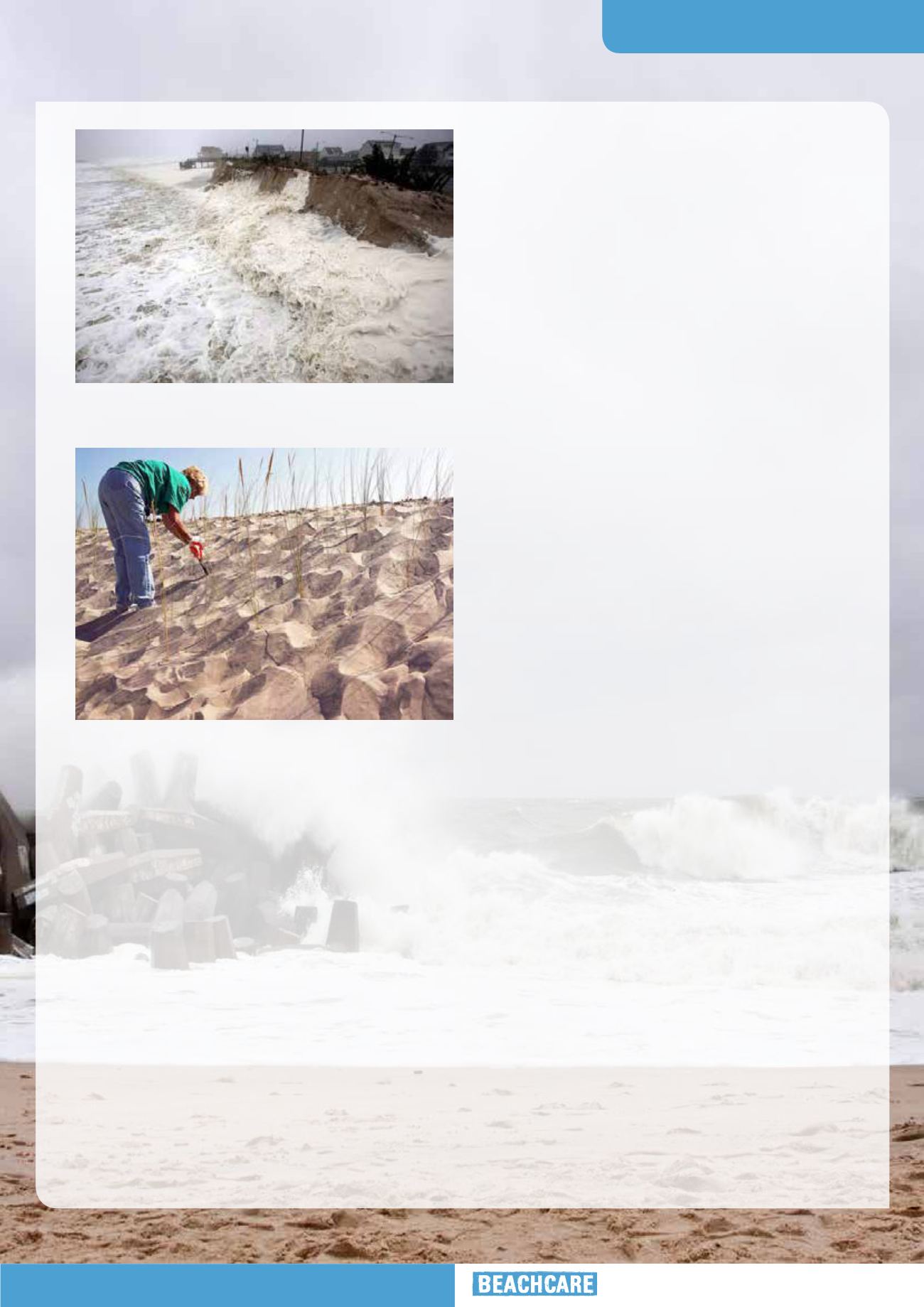
15
Magazine
Lessons from Hurricane
Sandy: Wide beaches, high
dunes protect people and
property
In late October 2012, Superstorm Sandy landed ashore in southern
New Jersey, forever changing the face of the New York-New Jersey
coastline and the lives of the many people who live, work and play
there.
So what happens when you wrap a hurricane inside a winter
storm, and have it come ashore during extremely high tides?
Unexpected and significant coastal impacts, including major beach
erosion, flooding and structural damage, but concentrated in those
areas where the beach and dune defences were not adequate to
absorb the surge and waves from this record-setting storm.
One of the main takeaways from the storm was that wider
beaches with high dunes work. The wide sandy beaches and high
dune systems kept the waves away from upland property and
infrastructure, and prevented flooding from the unexpected storm
surge.
Even in areas where the beaches and dunes were lost, they
provided the first line of defence and helped minimise the amount
of damage that occurred. They absorbed the first onslaught of
wave energy and storm surge before they were overcome. Where
the beach was narrow or the dunes too low, Sandy overtopped the
coastal protections, flooded the upland homes and structures, and
pushed beach sand into the streets.
One reason for having a wide beach is to create a buffer, so sand will be “sacrificed” to help protect things landward of it. Similarly, high
dunes behind the beach serve as a stopbank, preventing inland flooding. In Sandy, all along the affected coast healthy beaches did just
that – when adjacent coastal communities suffered differing amounts of damage, the health (width and height) of their beach and dune
systems was the deciding factor in reducing destruction.
At Long Beach Island, a narrow 29 kilometre strip of land, the storm’s raging winds and powerful surge of water carved two communities
out of one. There were places that had a protective dune system restored and, as a result, sustained minimal damage. Then there were
areas with no tall dunes, where Sandy made its destructive powers known. In those neighbourhoods the destruction was complete. Older
homes were ripped from foundations and tossed about as the ocean met the bay. Trailers fell like dominoes. And houses on the beach,
designed to have their first floors breakaway in a surge, did exactly that. The sand beneath those structures washed away, leaving many six
metres in the air with little to hold them in place.
References:
American Shore and Beach Preservation Association
N.J. sand dunes protected Shore towns from Hurricane Sandy’s wrath:
Background image: Point Pleasant New Jersey on Sunday, 28 October 2012, one day before Hurricane Sandy made landfall.
Sharon Lynch plants beach grass on protective sand dunes in the Breezy
Point neighbourhood in the Queens borough of New York City,
on the one-year anniversary of Hurricane Sandy.
Photo courtesy of Spencer Platt/Getty Images North America.
Waves from Hurricane Sandy erode the dunes in Ortley Beach, New Jersey.
Photo courtesy of David Gard/The Star-Ledger.


